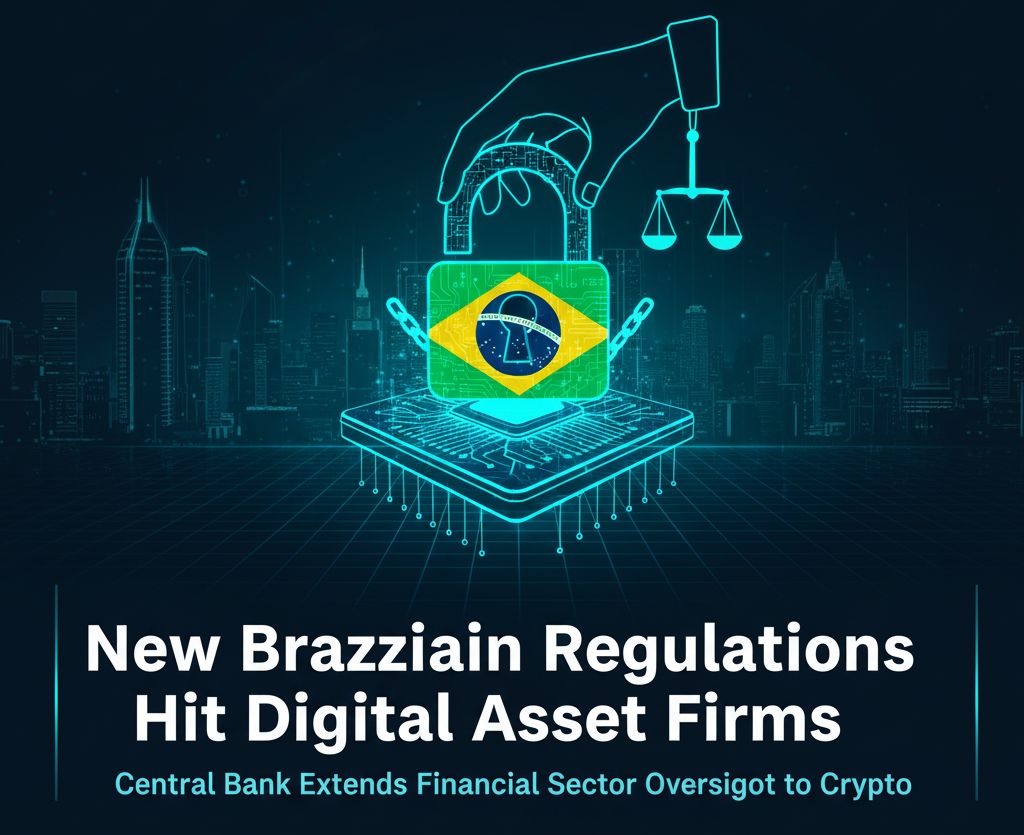Brazil’s Central Bank (BCB) on Monday released new, extensive regulations for local digital asset service providers. The move locks in tighter requirements across the sector, mostly to fortify ongoing efforts against illicit activities and crypto operations, aligning them with traditional finance mandates.
The new rules by the central bank require all virtual asset service providers to formally obtain authorization from it to operate in the country. Moreover, service providers are categorized into three specific categories now: virtual asset intermediaries, custodians, and brokers.
New Requirements Target Money Laundering Risks
This new framework comprehensively extends existing requirements from the traditional financial sector in important areas, including customer protection, robust internal controls, governance, and security protocols. Crucially, the rules also include strict measures to prevent money laundering and terrorist financing.
Brazilian authorities have been keeping a close eye on the recent surge in stablecoin transactions. Central bank governor Gabriel Galipolo described the rapid rise as “significant and worrying.” At the start of the year, Galipolo said that roughly 90% of Brazil’s crypto transaction volume is linked to the use of stablecoins.
Policymakers are concerned that many stablecoins have become a means for side-stepping traditional, more regulated and taxed systems of finance. The central bank made its intention known quite clearly: it wants these digital assets to no longer be used as easy channels for tax evasion, fraud, or illicit transfers.
Stablecoins as Foreign Exchange Instruments
“New rules will reduce the scope for scams, fraud and the use of virtual asset markets for money laundering,” said Gilneu Vivan. He is the central bank’s director of regulation. This regulatory alignment is now set to increase compliance costs for firms operating in Brazil.
The major change is that for the first time, stablecoins are classified as forex operations. That means every transaction now has to comply with disclosure and compliance standards applicable to traditional cross-border currency transactions. Although this is expensive for companies, the move gives credence to the sector.
It explains precisely how virtual assets fit into the nation’s financial framework. The head of the central bank, Roberto Campos Neto, had earlier this year discussed his plans to regulate stablecoins and asset tokenizations next year. This latest regulatory rollout would then seem to be a first major step in that promised direction.
Brazil Sets Global Precedent with Regulatory Move
With the central bank’s action, Brazil is set among the first large economies that have officially treated stablecoins as forex instruments. This could potentially impact how other jurisdictions tackle similar regulatory challenges. Around the world, countries are still implementing various stablecoin regulations on an ad hoc basis.
The European Union has MiCA, which governs markets in crypto-assets. More recently, Hong Kong introduced its stablecoin ordinance. The market for stablecoins is highly dominated by coins paired with the US dollar. The approach by Brazil to treat these stablecoins as forex addresses that very fact. Many nations are now considering similar steps to issue e-currencies or stablecoins pegged to their own local currencies.
